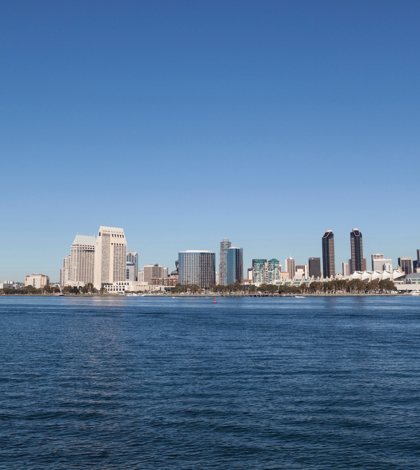Seven Water Quality Improvement Plans in San Diego County have been formally accepted by the San Diego Regional Water Quality Board (San Diego Water Board). The Water Quality Improvement Plans are mandated under the Regional Municipal Separate Storm Water Sewer System Permit (Regional MS4 Permit), which regulates storm water discharges in San Diego County and parts of south Orange and southwest Riverside counties.
The seven accepted Water Quality Improvement Plans provide the framework for allowing municipal and county governments and special storm water districts in San Diego County (referred to jointly as Copermittees) to choose an integrated and collaborative watershed–based approach toward improving water quality.
The plans intend to reduce the effects of storm water pollution and related health risks and improve water quality in waterways and coastal areas popular with both tourists and local residents. Strategies for retrofitting developed areas with storm water runoff treatment where none exists, and to rehabilitate unhealthy segments of streams are included in several of the accepted plans.
The San Diego Water Board accepted the Water Quality Improvement Plans for the following watershed management areas in San Diego County: San Luis Rey River, San Dieguito, Peñasquitos, Mission Bay, San Diego River, San Diego Bay and Tijuana River. Due to the high levels of bacteria found in post-storm waters many of these areas have posted signs warning visitors not to swim or recreate in the water following storms. A number of these locations are popular tourist destinations.
“The successful implementation of these plans will not only benefit our environment, resulting in cleaner inland and coastal waters, but also enhance the San Diego region’s robust tourist economy, which can exceed nearly $10 billion annually,” said San Diego Water Board Executive Officer David Gibson. “Acceptance of these plans is a major milestone in the San Diego Water Board’s efforts to reduce the effects of storm water pollution and achieve improvements in the water quality of inland surface waters, bays, estuaries and coastal waters within the San Diego Region.”
Since Water Quality Improvement Plans are watershed-based, the Copermittees are given flexibility to identify efficiencies to increase their collective effectiveness. The Copermittees can conduct adaptive management on their own initiative without waiting for direction from the San Diego Water Board. For example, structural controls designed to improve storm water runoff quality can be placed in strategic locations throughout the watersheds, where pollutant loads are typically highest without first seeking Board approval.
“Since the Clean Water Act was adopted with mandates for storm water quality protection, we’ve spent 25 years developing tools to manage storm water as a flood hazard, source of pollution and as a resource in an ever drier state. What has been lacking has been a strategic watershed approach with local buy-in and community support to put all the technical pieces together,” Gibson said.
A primary economic driver in the San Diego region is water – water to drink, water for businesses, and 70 miles of scenic beaches that draw tourists from all over the world. According to the San Diego Tourism Authority, the region is a prime U.S. destination, hosting 34 million visitors every year. Tourists to the area spend nearly $9.9 billion annually, which in turn generates more than $16 billion in new revenue for the region and provides employment to more than 180,000 residents.
Water Quality Improvement Plans for Orange and Riverside counties are currently in the development stage. The plans for the Carlsbad watershed management area has not yet been accepted because it failed to meet the minimum requirements of the Regional MS4 Permit.
 California Water News Daily Your Source For Water News in California
California Water News Daily Your Source For Water News in California


